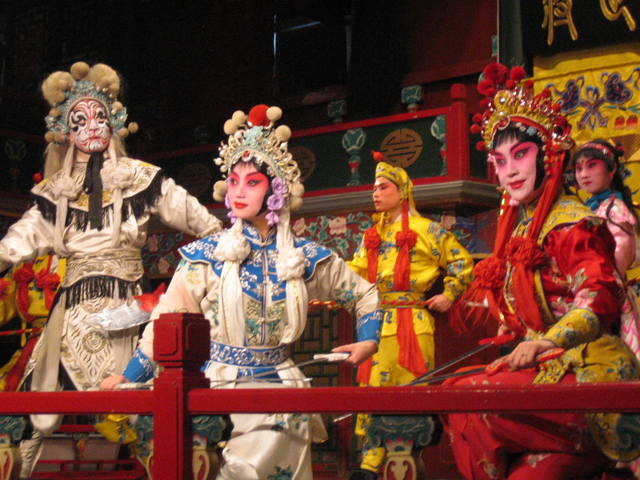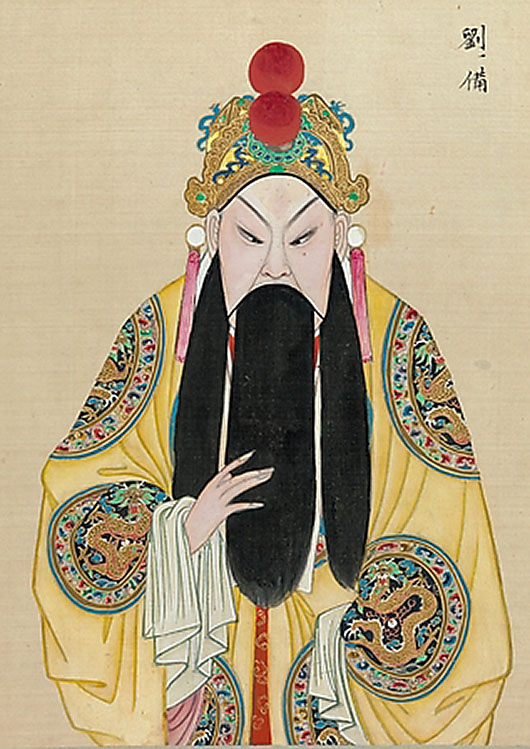


22.jpg)
The picture below is from a modern adaptation of this opera. The Emperor Qianlong even commissioned an opera with an epic 240 acts. Many operas from the Qing Dynasty had 20 or more acts and would take several days to watch. Peking Operas used to be unbelievably long. You even see stylization in dialog: Performers create a rhythm in their speech by lengthening certain syllables.

So if a performer raises their arm as if they’re holding a lantern, the audience will know that it’s night time. There are also set movements to convey certain meanings. And, when a character is changing direction, they’ll walk in an S-shape rather than just turn. This stops there being harsh angles when they move their head and eyes. So when looking at an object, the character will move their eyes in a circular motion from low to high before finally looking at the thing. Movements are also stylized to make them round. Red means loyalty, black means forthrightness, and so on. Peking Opera is also much more stylized than Western Opera.įor example, you can tell the jìng characters by looking at what color their face is painted. You can see jìng characters in the image below. That means you can get female performers playing a male role, such as shēng. Each role has its own singing style – but can be at various pitches. There are shēng 生 (male characters), dàn 旦 (female characters), jìng 净 (males with painted faces) and chǒu 丑 (clowns). In Peking Opera, performers are divided into fixed character types. In Western opera, performers are divided into groups based on how high they sing: You have basses then tenors then altos then sopranos. There’s a big emphasis on movement: Dancing and martial arts are both considered key elements. However, there are also some big differences, as detailed below. For example, both have a story and performers in costumes singing. There are similarities between these two traditions. From Wikimedia by Saad Akhtar Peking Opera vs. There are major troupes throughout China, the Chinese speaking world, and even the United States. I’ll then tell you a bit more about its use as a tool for propaganda.īefore I start, I should point out that Peking Opera is not just in Beijing (previously known as Peking). So in this post, I’ll first take you through how it’s different to Western opera. Your browser does not support the audio element.Īs it’s such an important part of Mandarin Chinese culture and history, I thought it would be interesting to take a detailed look at Peking Opera. There’s a repertoire of over 1400 operas, based on things like Chinese history, Chinese folklore and life in modern China. Beijing Opera (AKA Peking Opera) is a 200-year old art form, now considered Intangible Cultural Heritage of Humanity by UNESCO.


 0 kommentar(er)
0 kommentar(er)
